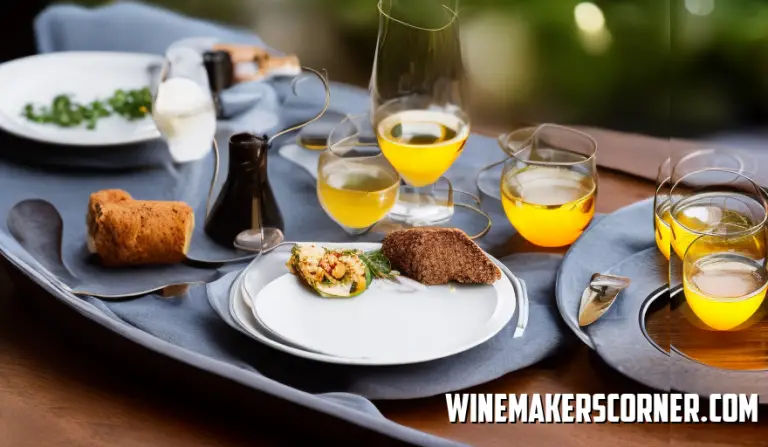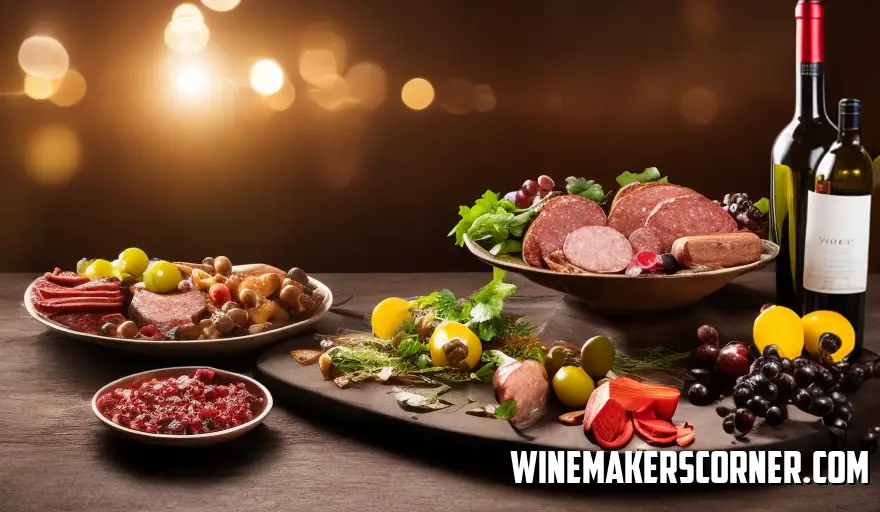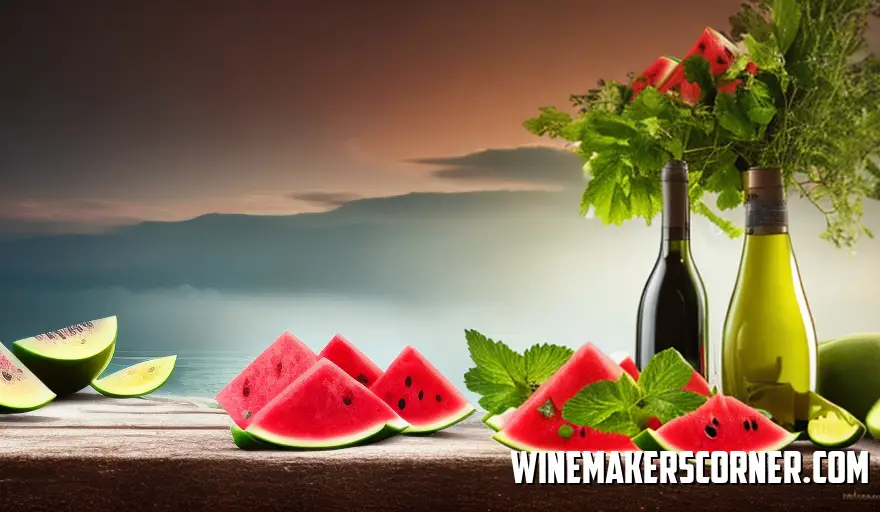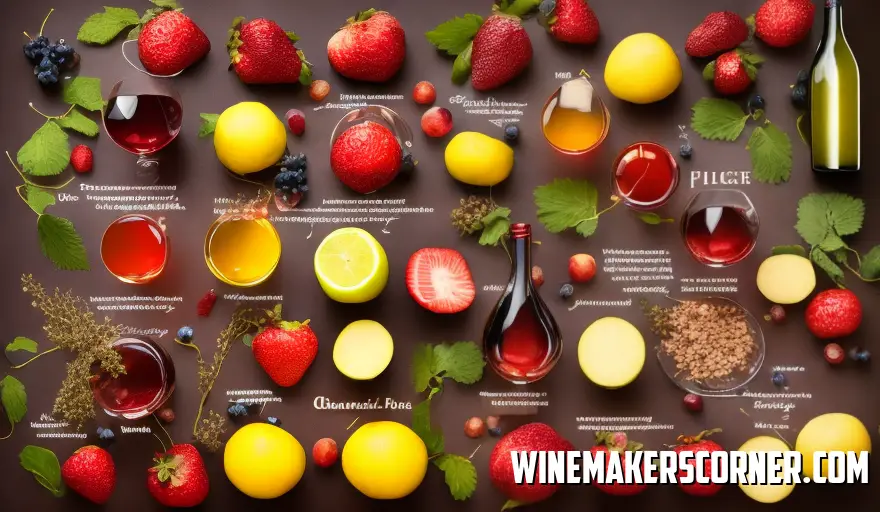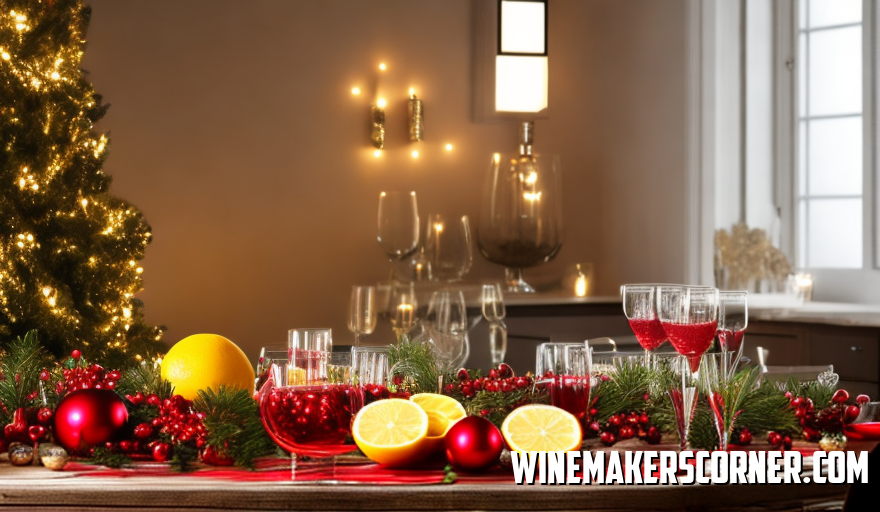Let’s paint a picture: A warm summer night spent sitting on your porch sipping on a glass of homemade wine while witnessing the sunset dip below the horizon in front of you.
As each waft carries an alluring scent through the air around you, taking that first sip introduces an explosion of flavors meant only for satisfying your taste buds’ desires – no ordinary bottle could compare!
Welcome to the world of homemade wines, where endless opportunities await those brave enough to explore them fully.
Following our expert instructions and carefully allowing creativity to flow, you’ll soon enjoy tailor-made wine perfect for your unique palate. Let’s all raise our glasses to exciting times ahead. Cheers!
Table of Contents
Exploring the World of Homemade Wines
If you’re looking for a creative outlet that’s both satisfying and fun, making your wine home is an excellent place to start. For those who appreciate good wine crafting homemade blends is an adventure worth taking. The opportunities are endless with homemade wines because you can experiment with classic grape varietals or try new fruit infusions that tickle your taste buds in fascinating ways. This article explores some delightful homemade wines that cater to every palate.
Begin with the basics: reds and whites form the foundation of winemaking. Reds like Merlot or Cabernet Sauvignon offer rich flavors that pack a punch, while whites like Chardonnay or Sauvignon Blanc provide crisp notes perfect for any occasion. Trying out different grape varieties in your winemaking process gives rise to unique tastes and textures that will leave your senses craving more.
Now let’s talk about fruit wines. Think outside the grape and be adventurous! Apples, berries, and tropical fruits can deliver exceptional results when transformed into delightful libations. Blueberry wine has sweet yet tart undertones; peach wine has summery warmth, while pineapple wine surprises with its zesty tanginess. If you want to spice up your drinking choices, fruit wines are playful in flavor and presentation, making them ideal for gatherings.
And let’s not forget dessert wines! Satisfy sweet cravings with delicious options like chocolate raspberry port or honey mead, which pair perfectly with any dessert dish. Not only that, but they also make excellent nightcaps for any mealtime occasion! If bold and daring, why not try unconventional varieties like herbal or floral wines?
Winemakers have been experimenting with unique flavors such as lavender and dandelion blends – capturing soothing aromas and the essence of springtime in each bottle, respectively. Expand your winemaking knowledge by trying these exciting concoctions – it will be worth it!
A Beginner’s Guide to Winemaking
Winemaking is an artistic expression that tantalizes all senses while providing substantial satisfaction for hobbyists worldwide. It can be daunting for beginners entering the vast array of homemade wines available today. Yet fear not; this step-by-step guide will confidently ease you through the entire process.
Begin by assembling essential equipment like a fermenting bucket, airlock, siphon tube, and hydrometer alongside bottles that will aid in producing delicious wine from quality ingredients like fresh fruit or grape juice concentrate—sugar or honey to control sweetness levels and wine yeast necessary for starting fermentation successfully should be included too. Prioritize sanitation above everything else before preparing your base ingredient – blend it uniformly until it reaches ideal smoothness before transferring it into the fermenting bucket and water to get the target volume. Take specific gravity measurements using a hydrometer at this point.
Are you ready to introduce yeast? It’s time to sprinkle some wine yeast over your concoction while gently stirring it. Attach an airlock before proceeding further to avoid contamination while allowing carbon dioxide to escape during fermentation.
Winemaking requires patience from start to finish; hence let your must (the juice solids mixture) ferment for roughly 7 to 10 days before transferring it through siphon tubes into another sanitized container for its secondary fermentation process. This crucial step helps clarify the homemade wine while enhancing its flavors further.
Congratulations on completing the critical stage of secondary fermentation – now all that remains is transferring the resulting liquid into clean bottles with tight-fitting corks or caps after approximately 4 6 weeks. But the journey doesn’t stop there; aging plays an essential role in bringing out the best flavors in your wine, so let it rest for at least six months to make them even more delightful.
The longer you age your wine, the more refined and delicious it becomes. In conclusion, winemaking is a creative adventure for those who dare to explore their palate and skills in crafting homemade wines tailored to their taste buds. Enjoy the fruits of your labor by taking a moment to savor and appreciate them.
You have worked hard and deserve this time to relax and indulge in the results of your efforts.
Crafting Fruit Wines: From Berries to Citrus
Crafting fruit wines is an enjoyable process that both beginners and experts can partake in. The satisfaction of turning abundant nature into a mouth-watering drink is too good to resist. From berries to citrus, the options are infinite. Discover new recipes that will impress even the pickiest of taste buds.
Berry wines are pretty trendy and for a good reason. Raspberries, blackberries, and blueberries each have their unique flavors and complexities. A well-made berry wine gives you a taste of summer in a glass. You can imagine sipping fresh homemade raspberry wine while watching the sunset – the ultimate relaxation moment. To make it happen, though, one has to be patient and pay attention to details like using only fresh fruits; this is essential for superior quality end product.
After gently washing them to remove debris or damaged parts comes the critical stage: fermentation, where yeast helps convert sugar into alcohol bringing out all hidden flavors in your chosen fruit. Citrus wines add an exciting twist with their tangy profiles and striking colors. Each makes for excellent wine, whether oranges, lemons, or limes. Imagine yourself sipping on a cool glass of tangerine wine on a hot summer day – pure thirst quencher goodness!
Crafting citrus wine differs slightly from berry wine due to acidity levels; you must adjust during fermentation for the best possible outcome. Developing your signature fruit wine recipe involves experimentation: blend different fruits or alter ratios until you find your sweet spot (pun intended).
Before long, you’ll have an array of homemade wines that cater to every palate – including yours!
To sum up, fruit winemaking provides endless opportunities for creativity and enjoyment. From mouth-watering berries bursting with flavor to energizing citrus notes, something tantalizingly delicious awaits everyone in this delightful realm.
The Art of Blending Wine: Creating Unique Flavors
Blending wine is an alluring exploration that can capture any enthusiast’s attention. By amalgamating diverse grape varieties or wines from numerous regions, winemakers have a journey full of infinite possibilities! The innovation behind blending brings forth unique flavors and textures that will tantalize even the most particular palate; thus, experimentation becomes essential in this creative process. When mixed correctly with complementary flavor notes, it creates harmonious symphonies bursting with flavorful ness – as if every new blend painted its picture, displaying each hue through every grape added.
Let us take you deeper into this enchanting world.
Traditional blends remain popular in the industry and renowned for their exceptional qualities. Bordeaux, for example, often includes Cabernet Sauvignon, Merlot, and Cabernet Franc grapes – it’s a true masterpiece! But why limit yourself to traditional blending when everyone can indulge in the fun of creating their unique blends from home?
Wine blending is an enjoyable way to experiment with different flavors and aromas. Start by tasting different varieties of wine and noting their distinct characteristics.
Then comes the exciting part – blending them!
To avoid any waste, begin with small quantities of each type and keep track of how much you use in each blend so you can replicate successful ones later on. Patience is critical during the blending process – allow your mixture to rest before taste testing again.
For those looking for an extra challenge, consider incorporating oak chips or natural fruit extracts into your blends to enhance their complexity.
The possibilities are truly endless when it comes to creating custom wines from home.
In conclusion, blending wines is a skill that allows for limitless creativity and exploration.
Whether you’re an experienced sommelier or new to the scene making personalized blends will enhance your appreciation for this classic beverage. So take a sip and savor the delicious fruits of your labor!
Age and Storage: Perfecting Your Homemade Wine
Creating perfect homemade wines depends primarily on two vital factors – age and storage – that significantly enhance their flavor profiles and bouquet gradually over time. Unfortunately, many wine enthusiasts underestimate these factors’ importance when perfecting their creations’ taste. In this article, we’ll explore how age and storage affect the quality of your product by integrating various winemaking aspects that guarantee delightful wines that will impress even the most discerning palates.
Aging is a vital aspect of winemaking; as your homemade wine matures, its flavors evolve into complex notes that become refined for a distinctive taste experience. However, rushing this process could lead to an underdeveloped taste or unwanted off flavors. Typically lighter wines like whites and rosés take about six months to a year before maturing, while bolder reds could take up to three years for optimal results.
Now let’s talk about storage – ensuring temperature stability throughout the wine’s life cycle is essential for preserving its integrity.
Aiming for a consistent environment with minimal fluctuations at 55°F (13°C) would be best, as excessive heat or cold can cause spoilage or expedite the aging process too quickly. Properly storing homemade wines involves managing several essential factors, including humidity of around 70%, which can prevent cork dryness and oxidation over time. It’s equally important not to overlook the damaging effects of light exposure – both natural sunlight and artificial sources generate UV rays capable of affecting the flavor profile of stored wine. Storing bottles horizontally can counteract this risk by keeping corks moist while simultaneously shielding them from harmful light damage.
Careful attention must be given to airflow within storage areas, too – good circulation helps avoid mold growth on corks while avoiding direct drafts that have the potential to introduce contaminants or create temperature fluctuations. For the ultimate in delightful homemade wines, patience is an undeniable virtue – allowing them the time they require to mature fully is always worth it.
The Beauty of Herbal and Floral Wines
Homemade libations have an exciting range of herbal and floral wines with delightful flavors that excite our palate while captivating our senses with enchanting aromas. These versatile brews are crafted from various herbs, flowers, or spices, making for an exciting journey manifesting endless possibilities. Invigorating flavors from rosemary, basil, and thyme complement well-balanced pasta dishes or summery nights when refreshing wine delights your taste buds.
The transformative potential of floral wines also holds significance. Using ingredients such as elderflower can create extraordinary elixirs transforming ordinary grape juices and fragrant blooms like lavender and hibiscus, which make for perfect relaxation in the sun with chilled glasses of wine! Crafting herbal and floral wines can be seen as an art form that demands patience as you slowly infuse your chosen components into the fermenting must. This delicately balanced process allows intricate flavors to develop as experimentation becomes critical! Mixing different herbs or flowers can spark blissful outcomes when blended well together. Once made, these homemade creations stand out from the crowd by delivering unparalleled taste experiences while providing numerous health benefits in return.
Various herbs and flowers contain therapeutic properties whose advantages can be found within their wine counterparts – take dandelion wine’s aid in digestion or chamomile’s calming effects as prime examples. In conclusion, herbal and floral wines showcase endless possibilities that cater best to individual palates by offering unique yet wholesome drinks using naturally derived ingredients for overall well-being.
So why wait? Try making your exquisite homemade wine infused with the soulful essence of your beloved herb or flower today. Trust us; it’ll be worth it for your taste buds!
Troubleshooting Common Winemaking Issues
There’s nothing quite like creating your homemade wine to bring a sense of satisfaction and delight. But sometimes, things don’t go according to plan, even for experienced winemakers. In this section, we’ll explore some common problems encountered during the winemaking process and provide solutions so that you can enjoy a delicious outcome.
Fermentation is often one of the trickiest stages in winemaking, experiencing anything from sluggishness to lack of activity entirely. Factors like temperature, yeast health, and sugar levels play their part. Still, they are easily remedied by warming up your must (the crushed grape mixture), ideally around 70 75°F, which encourages more excellent activity from the yeast. Including fresh yeast or more nutrients could also help reinvigorate digestion if necessary.
Off-flavors in wines can be a huge disappointment. If you’ve detected an unpleasant odor similar to rotten eggs, it could be because of hydrogen sulfide formation due to stressed-out yeasts during fermentation. Want your wine free from unpleasant smells?
Vigorously stir or add copper sulfate, as both methods help release trapped gases causing foul odors. However, oxidation is an unavoidable challenge for even seasoned winemakers, with some wines taking on a brownish hue while tasting flat and lifeless due to overexposure to oxygen during production/storage. Minimizing headspace in containers and using airlocks during fermentation while maintaining proper cleaning procedures reduces the risk of oxidation altogether. Don’t let harmless sugar residues turn into dangerous bottle bombs! Ensure fermentation is complete before bottling; use a hydrometer across several days for consistent readings.
Lastly, don’t rush aging – patience counts! Although tempting, uncorking your homemade creation prematurely denies you the pleasure of enjoying its accurate flavor profile and complexity. Delay the drinking urge – your future self will appreciate it.
In sum, creating wine is a fine art that presents difficulties and gratification. Through resolving common problems and implementing superior methods, you can produce enjoyable homemade wines suited for any taste bud.
Here’s to you!
